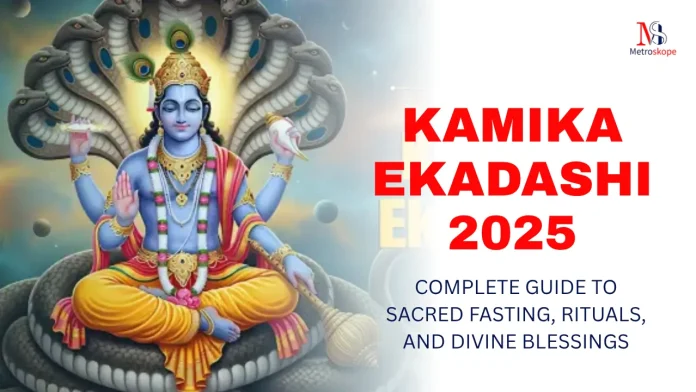Kamika Ekadashi 2025
Kamika Ekadashi stands as one of the most spiritually significant fasting days in the Hindu calendar, falling during the Krishna Paksha (dark fortnight) of the sacred month of Sawan (Shravan).
This auspicious Ekadashi is observed today, Monday, July 21, 2025, and holds immense religious importance for devotees seeking divine blessings, purification from sins, and spiritual liberation.
The word “Kamika” translates to “fulfilling desires,” making this Ekadashi particularly powerful for those seeking the fulfillment of their spiritual and material aspirations.
According to ancient scriptures, observing Kamika Ekadashi with devotion grants the same spiritual merit as performing the Vajapeya Yajna, one of the most revered Vedic rituals.
Kamika Ekadashi 2025: Date and Astrological Timings
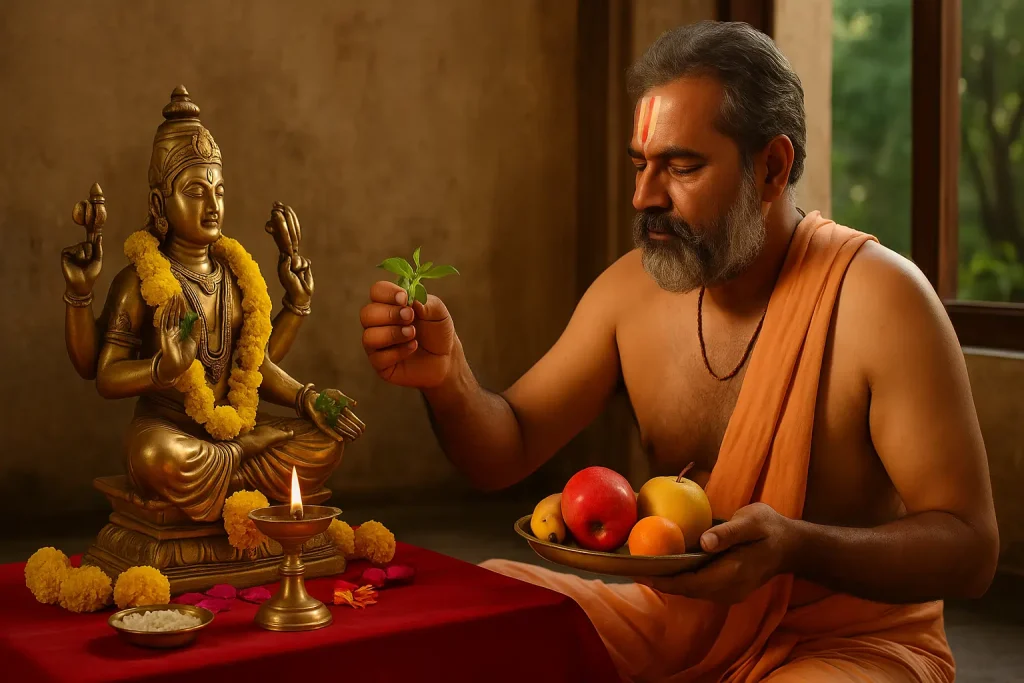
Precise Date and Tithi Details
Date: Monday, July 21, 2025
Ekadashi Tithi Timings:
- Starts: July 20, 2025, at 12:12 PM
- Ends: July 21, 2025, at 9:38 AM
Since Ekadashi fasts are observed based on Udaya Tithi (sunrise principle), the vrat is observed on July 21, 2025, when the Ekadashi tithi is present at sunrise.
Parana (Fast-Breaking) Details
Parana Date: July 22, 2025 (Tuesday)
Parana Timing: 5:37 AM to 7:05 AM
Dwadashi End Moment: 7:05 AM on July 22, 2025
The fast must be broken during Dwadashi tithi after sunrise, and parana should ideally be performed between the specified timings for maximum spiritual benefits.
Kamika Ekadashi Vrat Katha
Krishna Ji aur Yudhishthira Ji ka Samvad
Yudhishthira Ji ne Krishna Ji se poocha:
“Hे Govind! He Vasudeva! Aapko namaskaar hai. Shravan ke Krishna Paksha mein kaun si Ekadashi aati hai? Please uska varnان kijiye.”
Krishna Ji ne jawab diya:
“He Raajan! Main tumhein ek paap nashak upakhyan sunata hun, jo purvkal mein Brahmaji ne Naradji ko bataya tha.
He Yudhishthira, satyavadi aur mahan rishi, main tumhein is Ekadashi ke bare mein detail mein bataunga, iske vrat ke bare mein jo sabhi papon ka nash karta hai.”
Brahma Ji aur Narad Ji ka Conversation
Narad Ji ne Brahma Ji se poocha:
“Bhagwan! Kamalasan! Shravan ke Krishna Paksha mein jo Ekadashi aati hai, uska kya naam hai? Uske kaun se devata hain aur usse kaun sa punya prapt hota hai?”
Brahma Ji ne kaha:
“He Narad! Shravan maas mein jo Krishna Paksha ki Ekadashi aati hai, use ‘Kamika’ kaha jata hai. Iska smaran matra karne se Vajapeya Yajna ka phal mil jata hai.”
“He Narada, is Ekadashi ka naam sunne matra se hi Vajapeya Yajna jitna punya milta hai. Is din Shridhar, Hari, Vishnu, Madhav aur Madhusudana adi namon se Bhagwan ka pooja karna bahut faldayak hota hai.”
Brahma Ji ne Narad Ji ko Benefits Bataye
Brahma Ji ne aage kaha:
“Narada, Ganga mein snaan karne se, Kashi, Naimisharanya aur Pushkar mein snaan karne se jo phal milta hai, vahi phal is Ekadashi par Bhagwan Vishnu ki pooja karne se mil jata hai.”
“Jo vyakti is tithi par Kamika Ekadashi ka vrat rakhta hai, vah samudra aur van sahit samoochi prithvi ka daan karne ke saman phal ka bhagi hota hai.
Sinhh rashi mein Guru ke din Godavari nadi mein snaan karne se jo phal milta hai, vahi is Ekadashi par Bhagwan ki pooja se prapt hota hai.”
The Divine Dialogue Between Lord Krishna and Yudhishthira
The Kamika Ekadashi Vrat Katha originates from the sacred conversation between Lord Krishna and King Yudhishthira, as narrated in ancient scriptures.
The story begins when Yudhishthira approaches Lord Krishna seeking knowledge about the Ekadashi that occurs during the Krishna Paksha of Shravan month.
Yudhishthira’s Inquiry:
“O Govinda, O Vasudeva, I offer my salutations to you. Which Ekadashi occurs during the dark fortnight of Shravan month? Please describe its significance and benefits.”
Lord Krishna’s Response:
Lord Krishna narrates the story originally told by Lord Brahma to Sage Narada, emphasizing the sin-destroying power of this sacred observance.
The Legend of King Mahajit
According to the traditional vrat katha, there once lived a pious and physically strong king named Mahajit who ruled with righteousness.
However, due to certain circumstances, a sage cursed the king, leading to his downfall and spiritual suffering.
The story teaches that through the observance of Kamika Ekadashi with complete devotion, even the most severe karmic debts can be cleared, and divine grace can transform one’s destiny.
Spiritual Significance of the Story
The vrat katha emphasizes that merely listening to or reciting the story of Kamika Ekadashi grants immense spiritual benefits.
Lord Krishna explains that this observance provides the same merit as:
- Performing Vajapeya Yajna
- Bathing in all sacred rivers on auspicious days
- Visiting all major pilgrimage sites including Kashi, Haridwar, and Kedarnath
Detailed Puja Vidhi (Ritual Procedures)
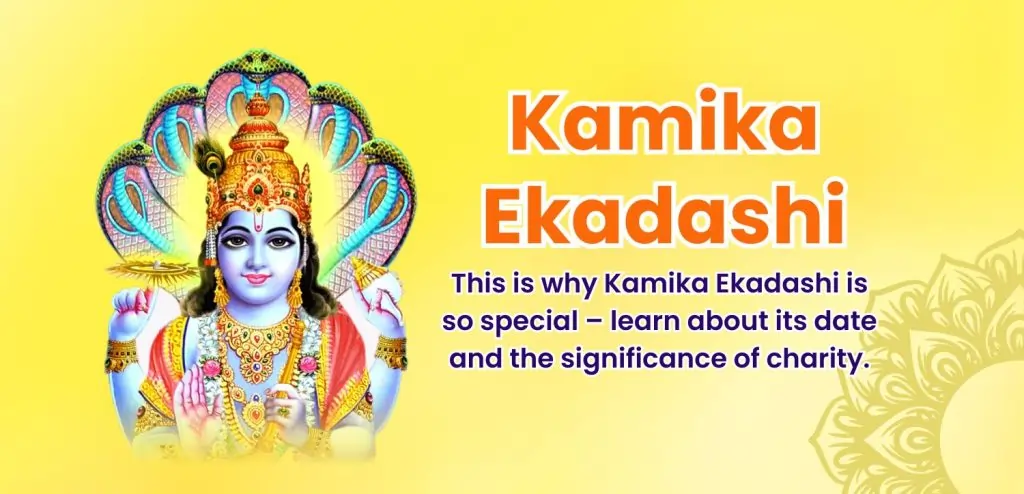
Pre-Dawn Preparations
1. Early Morning Bath (Brahma Muhurta)
- Wake up during Brahma Muhurta (approximately 4:01 AM)11
- Take a holy bath before sunrise (5:37 AM)
- Clean your home and altar with Ganga water
2. Altar Preparation
- Set up a clean worship area facing east or north
- Place an image or idol of Lord Vishnu
- Arrange necessary puja items including flowers, incense, lamps, and offerings
Step-by-Step Puja Ritual
3. Invocation and Prayers
- Begin with meditation and prayers to Lord Ganesha
- Invoke Lord Vishnu with folded hands
- Recite the fundamental mantras:
- “ॐ नमो भगवते वासुदेवाय” (Om Namo Bhagavate Vasudevaya)
- “ॐ विष्णवे नमः” (Om Vishnave Namah)
4. Offering Rituals
- Offer fresh flowers, preferably lotus or marigold
- Present Panchamrit (mixture of milk, yogurt, ghee, honey, and sugar)
- Light incense sticks and oil lamps
- Offer fruits, kheer, and dry fruits as bhog
5. Sacred Tulsi Worship
Tulsi (holy basil) worship holds special significance on Kamika Ekadashi:
- Water the Tulsi plant with devotion
- Offer Tulsi leaves to Lord Vishnu
- Circumambulate the Tulsi plant while chanting mantras
According to scriptures, Lord Vishnu values Tulsi leaves more than precious gems, diamonds, or gold.
Evening Rituals
6. Aarti and Devotional Songs
- Perform evening aarti with ghee lamps
- Sing devotional bhajans and hymns
- Recite Vishnu Sahasranama (1000 names of Vishnu)
- Read from Bhagavad Gita or other sacred texts
7. Night Vigil (Jagran)
Traditional observance includes staying awake throughout the night in prayer and meditation.
Devotees who maintain jagran are believed to never face the wrath of Yamaraj (God of death) and avoid negative destinies.
Shubh Muhurat (Auspicious Timings)
Daily Auspicious Periods for July 21, 2025
Amrita (Best Period): 5:36 AM to 7:19 AM
Shubha (Good Period): 9:02 AM to 10:45 AM
Labha (Gain Period): 3:53 PM to 5:36 PM
Periods to Avoid
Kala (Loss Period): 7:19 AM to 9:02 AM
Roga (Evil Period): 10:45 AM to 12:27 PM
Udvega (Bad Period): 12:27 PM to 2:10 PM
Special Yogas Forming Today
Today’s Kamika Ekadashi is particularly auspicious as it coincides with Amrita Siddhi Yoga and Sarvaartha Siddhi Yoga, which amplify the spiritual benefits of any religious observance.
Comprehensive Fasting Rules and Guidelines
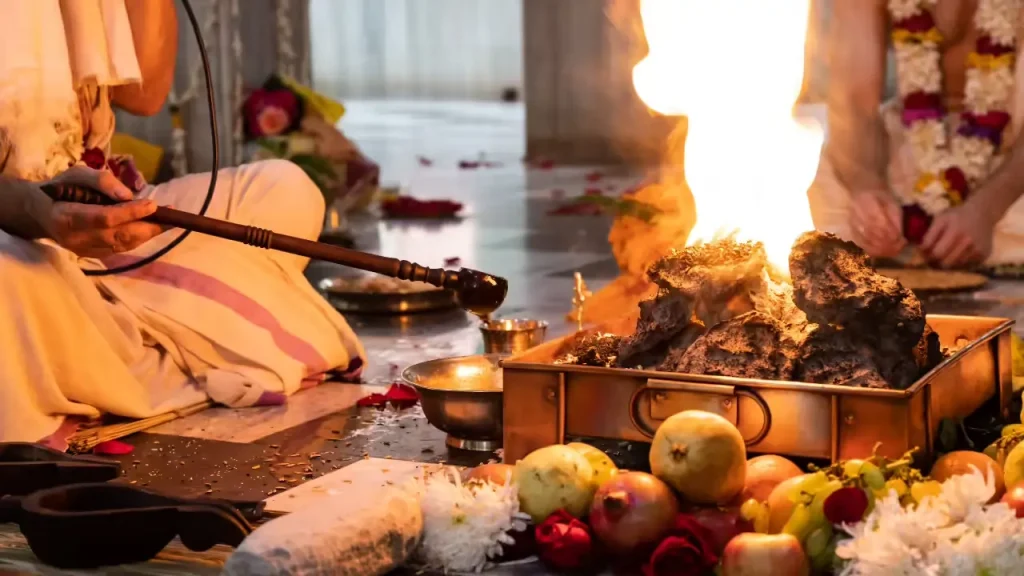
Complete Fasting Approach
Traditional Nirjala Vrat:
- Abstain from all food and water from sunrise on July 21 until sunrise on July 22
- Only suitable for those in good health and with spiritual guidance
Modified Fasting Options
Phalahari (Fruit-based) Vrat:
- Consume only fresh fruits, milk, and water
- Avoid grains, vegetables, and processed foods
- Ideal for elderly devotees and those with health considerations
Saatvik Food Guidelines:
- If complete fasting isn’t possible, consume only saatvik (pure) foods
- Include milk, fruits, nuts, and specific fasting ingredients
- Avoid onion, garlic, non-vegetarian food, and alcohol
Essential Fasting Rules
- Mental Purity: Maintain positive thoughts and avoid anger or negative emotions
- Physical Cleanliness: Regular bathing and wearing clean clothes
- Truthfulness: Speak only truth and avoid harsh words
- Charity: Donate to the needy and help others
- Prayer Focus: Dedicate maximum time to prayer and meditation
Spiritual Significance and Benefits
Scriptural Importance
According to the Brahma Vaivarta Purana, Kamika Ekadashi holds extraordinary spiritual power. The sacred text states that observing this fast grants benefits equivalent to:
- Performing 1,000 Ashwamedha Yajnas
- Donating the entire earth with its oceans and forests
- Visiting all sacred pilgrimages during auspicious planetary combinations
Divine Blessings and Outcomes
Spiritual Benefits:
- Complete purification from all sins of current and past lives
- Attainment of Vaikuntha (Lord Vishnu’s divine abode)
- Liberation from the cycle of birth and death (moksha)
- Protection from Yamaraj and negative planetary influences
Material Benefits:
- Fulfillment of righteous desires
- Prosperity and abundance
- Good health and longevity
- Family harmony and peace
- Success in endeavors
Special Power of Tulsi Offerings
The scriptures particularly emphasize the significance of offering Tulsi to Lord Vishnu on Kamika Ekadashi:
“The Tulsi plant, which destroys all sins upon sight, purifies the body upon touch, removes diseases when offered respects,
frightens even Yamaraj when watered, leads souls to Lord Krishna when worn, and grants liberation when offered at the Lord’s feet – to such divine Tulsi, we offer our salutations.”
Sacred Mantras and Prayers
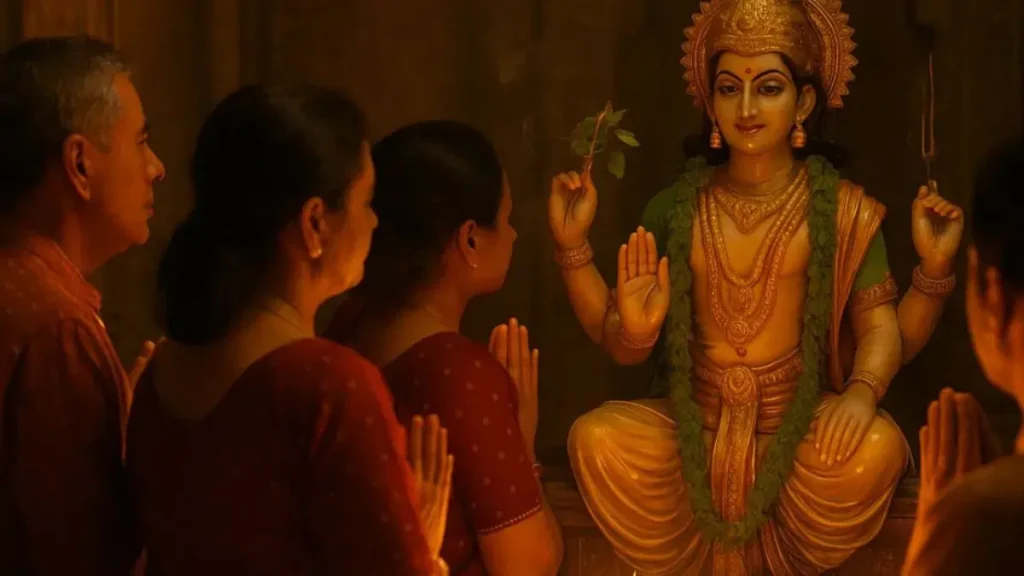
Primary Vishnu Mantras
Maha Mantra:
“ॐ नमो भगवते वासुदेवाय”
(Om Namo Bhagavate Vasudevaya)
Simple Invocation:
“ॐ विष्णवे नमः”
(Om Vishnave Namah)
Lakshmi-Narayana Mantra:
“ॐ श्रीं श्री लक्ष्मी-नारायणाभ्यां नमः”
(Om Shreem Shri Lakshmi-Narayanabhyam Namah)
Vishnu Gayatri Mantra:
“ॐ नारायणाय विद्महे वासुदेवाय धीमहि तन्नो विष्णुः प्रचोदयात्”
(Om Narayanaya Vidmahe Vasudevaya Dhimahi Tanno Vishnuh Prachodayat)
Recommended Recitations
- Vishnu Sahasranama: The 1000 names of Lord Vishnu
- Vishnu Stotra: Devotional hymns praising Lord Vishnu
- Bhagavad Gita: Especially Chapter 7 (Knowledge of the Absolute)
- Kamika Ekadashi Vrat Katha: The complete fasting story
Special Rituals and Offerings
Lamp Lighting (Deep Daan)
Lighting lamps on Kamika Ekadashi holds special significance:
- Light oil lamps with sesame oil or ghee before Lord Vishnu
- The merit of this offering is countless, even Chitragupta (divine recorder) cannot measure it
- Ancestors in heaven become satisfied and blessed through this offering
- After death, the devotee reaches heaven illuminated by millions of lamps
Temple Visits and Pilgrimages
While home worship is complete, visiting Vishnu temples enhances the spiritual experience:
- Preferred Temples: Vishnu, Krishna, Rama temples
- Offerings: Flowers, fruits, sweets, and Tulsi leaves
- Activities: Circumambulation, prostration, and meditation
Charitable Activities
Kamika Ekadashi is an auspicious time for dana (charity):
- Feed the hungry and help the needy
- Donate clothes, food, or money to deserving causes
- Sponsor religious activities or temple maintenance
- Support spiritual seekers and sadhus
Breaking the Fast (Parana Vidhi)
Proper Parana Timing
The fast must be broken during Dwadashi tithi after sunrise on July 22, 2025, between 5:37 AM to 7:05 AM. Breaking the fast at the correct time is crucial for receiving complete spiritual benefits.
Parana Procedure
Step 1: Wake up early and take a bath
Step 2: Perform morning prayers to Lord Vishnu
Step 3: Offer water and prayers to Tulsi plant
Step 4: Have a simple, sattvic breakfast
Step 5: Express gratitude for the successful completion of the vrat
Recommended Foods for Breaking Fast
- Fresh fruits (banana, apple, pomegranate)
- Milk and dairy products
- Light kheer or sweet rice
- Nuts and dry fruits
- Simple vegetarian meals avoiding onion and garlic
Contemporary Relevance and Modern Observance
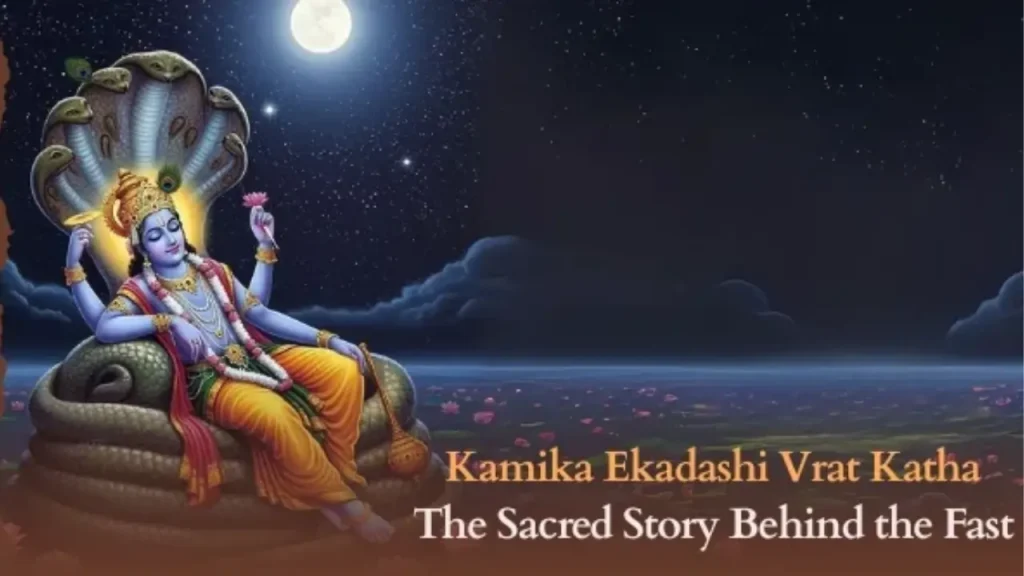
Adapting Ancient Wisdom to Modern Life
In today’s fast-paced world, Kamika Ekadashi offers an opportunity for spiritual reset and mental peace. Even those unable to observe complete traditional fasting can benefit by:
- Maintaining mental discipline and positive thoughts
- Practicing meditation and mindfulness
- Reducing material consumption
- Focusing on spiritual reading and learning
Health Considerations
Modern practitioners should consider their health conditions:
- Consult healthcare providers if having chronic conditions
- Pregnant women and children can observe modified fasting
- Elderly devotees may choose fruit-based or partial fasting
- Maintain hydration and avoid extreme measures
Regional Variations and Cultural Practices
Pan-Indian Observance
Kamika Ekadashi is celebrated across India with slight regional variations:
- North India: Focus on elaborate pujas and community gatherings
- South India: Emphasis on temple visits and classical music offerings
- West India: Integration with local folk traditions and bhajan singing
- East India: Special fish-shaped sweets and cultural programs
Modern Community Celebrations
Contemporary observance often includes:
- Community bhajan sessions and kirtan
- Group fasting and collective breaking of fasts
- Online spiritual discourses and virtual temple darshan
- Social media sharing of spiritual experiences and learning
Embracing Divine Transformation
Kamika Ekadashi 2025 presents a golden opportunity for spiritual advancement and divine connection.
This sacred day, falling on July 21, 2025, offers devotees a chance to purify their consciousness, fulfill their righteous desires, and progress toward ultimate liberation.
The ancient wisdom embedded in the vrat katha, combined with the precise observance of rituals and fasting, creates a powerful spiritual practice that transcends time and cultural boundaries.
Whether observed traditionally or adapted to modern circumstances, Kamika Ekadashi remains a beacon of hope and transformation for sincere seekers.
As devotees across the world observe this sacred fast today, they join a timeless tradition of devotion that connects the individual soul with the Supreme Divine, promising not just temporary relief from life’s challenges, but eternal spiritual fulfillment and divine grace.

